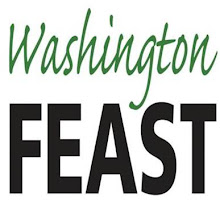
As children, we all remember having butterflies at the end of the summer as our parents prodded us to pick out lunch boxes and try on new clothes. As parents of food allergic children, we may feel those butterflies return, as we think about turning over responsibility of our children’s well being to school staff. If we aren’t careful, our anxiety can spill over and increase the butterflies that our kids are feeling as a natural part of returning to or starting school. While seeking out a therapist in anxiety management may be something to consider, much can be achieved via good planning. There are several vehicles for planning for accommodating food allergic students in the school setting, including the Individualized Health Plan (IHP) and 504 Plan, in some cases they are one in the same.
· Emergency action plan. This plan is developed in conjunction with the school nurse and is based on written prescription orders from your child’s physician. This plan describes the symptoms of anaphylaxis that your child may exhibit and instructs staff about what actions to take in the event of a food allergy emergency. If you are in a state where nurses are not allowed to delegate judgment authority to staff, you may find that the staff will be advocating that all reactions are treated with epinephrine.
· Risk reduction plan. This plan informs school staff about how to AVOID having to implement the Emergency Action Plan. The goal is to address as many plausible risky situations as possible and contingencies for unanticipated situations. The topics you might address here include what allergens are allowed in the room for parties and snacks, review any food used in class projects or science kits, assess potential risks associated with field trips,
· Inclusiveness plan. This plan addresses steps to be taken by the school and staff to avoid exclusion of your food allergic child and can layer on top of a risk reduction plan, but in some ways I think it is beneficial to think of it as a separate exercise. Many parents supply safe snacks/treats for their food allergic children. However, due to the fact that this is a “separate but equal approach,” more and more parents are requesting that all celebrations and snacks be inclusive. This can be achieved by implementing non-food rewards and celebrations and, if food is allowed, only food listed on an approved snack/party list is used.
Where to start? See if your state has food allergy guidelines in place. If not, guidelines from other states can be very useful. Finally, there are many 504 planning resources on the web. For more info, check out http://www.foodallergy.org/.
Kelly Morgan
· Emergency action plan. This plan is developed in conjunction with the school nurse and is based on written prescription orders from your child’s physician. This plan describes the symptoms of anaphylaxis that your child may exhibit and instructs staff about what actions to take in the event of a food allergy emergency. If you are in a state where nurses are not allowed to delegate judgment authority to staff, you may find that the staff will be advocating that all reactions are treated with epinephrine.
· Risk reduction plan. This plan informs school staff about how to AVOID having to implement the Emergency Action Plan. The goal is to address as many plausible risky situations as possible and contingencies for unanticipated situations. The topics you might address here include what allergens are allowed in the room for parties and snacks, review any food used in class projects or science kits, assess potential risks associated with field trips,
· Inclusiveness plan. This plan addresses steps to be taken by the school and staff to avoid exclusion of your food allergic child and can layer on top of a risk reduction plan, but in some ways I think it is beneficial to think of it as a separate exercise. Many parents supply safe snacks/treats for their food allergic children. However, due to the fact that this is a “separate but equal approach,” more and more parents are requesting that all celebrations and snacks be inclusive. This can be achieved by implementing non-food rewards and celebrations and, if food is allowed, only food listed on an approved snack/party list is used.
Where to start? See if your state has food allergy guidelines in place. If not, guidelines from other states can be very useful. Finally, there are many 504 planning resources on the web. For more info, check out http://www.foodallergy.org/.
Kelly Morgan

